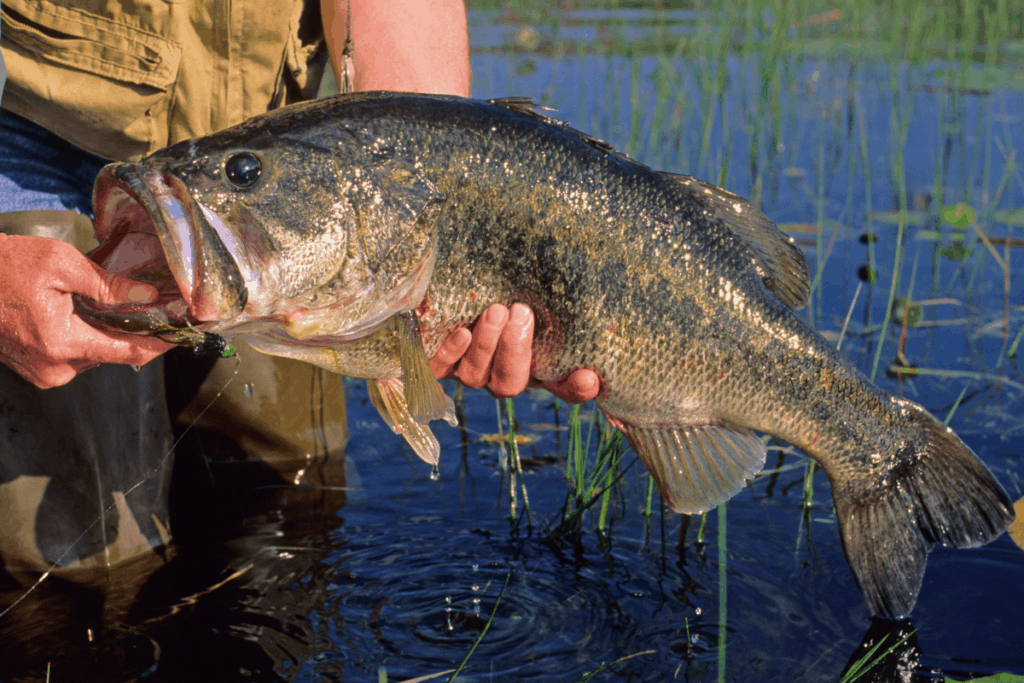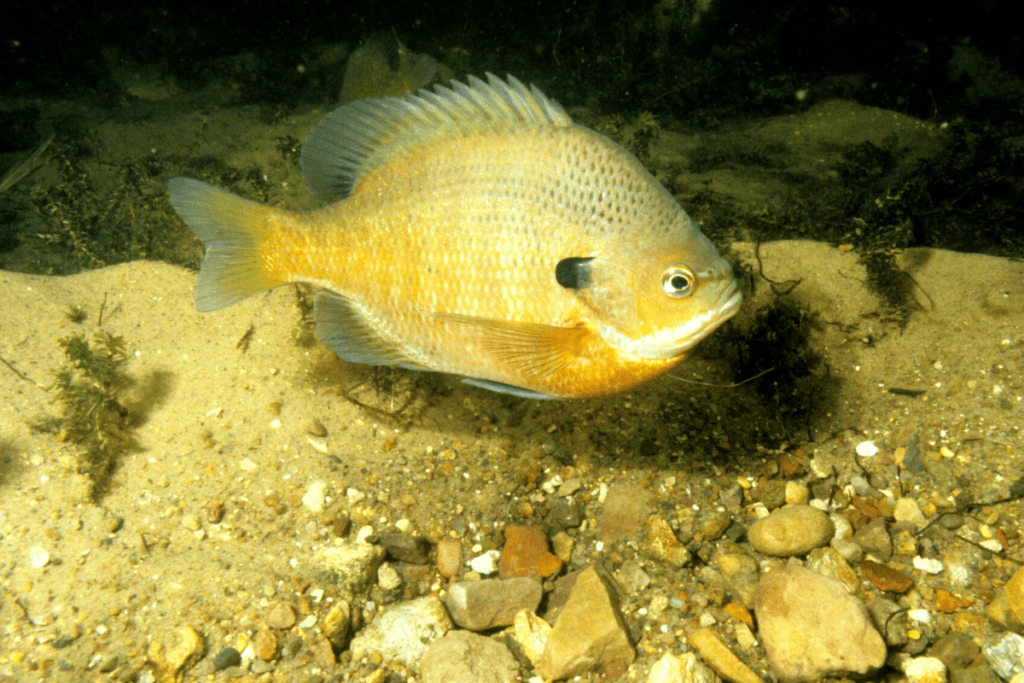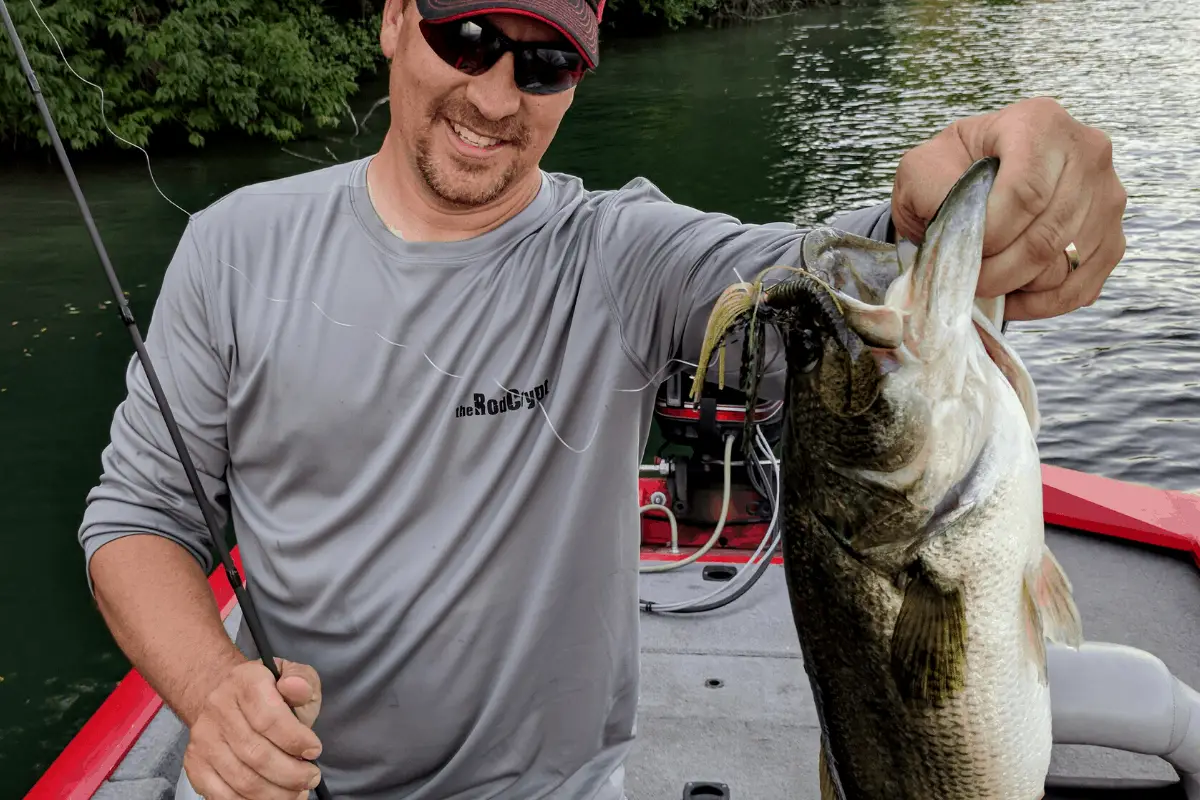During the spawn, you will find more big bass shallow than any other time of the year. There are a few different ways to approach this special season to catch some of the biggest trophies of your life.
To be successful during the spawn, it is important to understand that the bigger fish will hold just away from the bedding areas until conditions are perfect. Once the females spawn, they will quickly retreat back to the deeper water and leave the males to guard the nest. Finding these staging areas can unlock some excellent spawning season action.
In this article, I will discuss all phases of the spawning season so you can key in on those big bass.
When is the Spawn?
It is best to think of the spawn in regards to water temperature, not time of year. Once the lake or river cracks that 60° mark, there will be bass in some stage of the spawn. Smallmouth typically move up earlier than largemouth and may also spawn in deeper water if the clarity is right.
There will also be several waves of spawning fish that move up, spawn, and move out at different times. You can expect pretty consistent bedding activity when the water is in the range of 60° – 70°.
The moon phase will also play a role in determining when the majority of the fish will hit the shallows. You can check the shoreline one day and see very little activity. Then suddenly the next day is full of fish working on beds and giants are everywhere.

The Spawning Process
The first fish that you will see moving shallow will be the males. They are scouting out key spawning locations and will start to fan out beds. They will use their tales to clear away silt and debris and reach a harder, or rocky, bottom composition.
You can tell if a fish has been actively working on beds by the red marks on the bottoms of their tails and even bellies.
Once the males have prepared the spawning sites, the bigger females will move out from the deeper water staging areas and find a suitable mate. Most females are only up and near the beds for a short time. Once the spawn is complete, they will move off the bed to deeper water and leave the males to keep the eggs safe.
The males will stick with the nest until the eggs hatch. They may even follow the fry around for a few days protecting them as well, but soon the little ones are left to fend for themselves.
The Bedding Bass Dilemma
In many states, especially in cooler climates, there is an actual season for bass fishing. It is designed to protect the spawning process to help propagate the species. In many of these locations, you cannot deliberately target bass during the spawn, or in locales where you can, you must immediately release them.
In other states it is perfectly legal to fish for bedding bass, but should we?
When a bass is pulled off the nest, other fish like sunfish, raid the bed almost immediately and can wipe out the eggs in surprisingly quick fashion.
That is where the argument kicks in and each state an angler needs to make those decisions for themselves.
I am going to focus this article on catching bass as they stage both before and after the spawning process.
What Does it Mean to Stage?
There are two parts to the staging process – the prespawn and postspawn.
In the prespawn, the bass are waiting for conditions to warm up enough to start to make nests and drop their eggs. In the postspawn, the females are recuperating from the ordeal.
On either side of the actual spawn, the bass will stage. In other words, they are going to hold on some sort of cover or structure near the spawning areas. Often these spots are just out-of-sight in deeper water.
It’s kind of life people waiting outside of an amusement park for the gates to open and once they do, the crowd spreads out inside the park.
Bass will group up in large numbers close to their spawning areas.
These staging spots might be a ledge that suddenly drops into deeper water. It could be a boulder or brushpile, or even a ditch that runs from deep to shallow water.
As an angler, you are looking for anything that bass could rest on and wait. If you have side imaging sonar it is very possible to idle around and find these spots. You can also identify likely spawning areas and then “back off” a couple of casts and probe the water with crankbaits. There are a variety of lures you can use, but I like to keep it to baits that can cover a lot of water and are fished horizontally. Once you find them, there is probably another lure that will investigate the area more thoroughly.
Proper Mindset for Bass Fishing During the Spawn
If you are going to look for these large groups of pre- and postspawn fish. It is critical to remember that this process involves a lot of searching before the catching can take place.
Keep a positive outlook, because once you find those staging areas, it is possible to sit on them for a long time and just keep catching fish. Odds are that you will also land some real giants.

Spawning Bass Hate Bluegills
I should really say, spawning bass hate all forms of sunfish. These pesky and persistent creatures will harass and raid nests around the clock.
I have watched frustrated male bass run a bluegill off the bed one direction, only to have three more approach from the blindside and eat the eggs. The bass then returns to the nest and kicks those raiders away only to suffer the same fate.
It shocks me that those male bass do not perish from complete exhaustion.
We can use this loathing for sunfish to our advantage.
One of my favorite lures to elicit fearsome strikes from bass in all stages of the spawn is to use a bluegill patterned swim jig. They will attack this lure with total rage. This pattern works on any lake or river I have ever traveled to.
Make Sure Your Equipment is Ready
This is important to do all the time, but I really try to prepare for all the possibilities during the pre- and postspawn. Why? The odds of catching a monster-sized bass go way up.
Is the drag set properly on your reel? Have you changed the line lately or checked it for nicks and abrasion? Are the hooks you are using sharp? This is especially true on those crankbaits.
Are you using a rod that is appropriate for the technique? A rod with not enough backbone when fishing single-hooked lures can result in failed penetration and a bass that pulls free.
It seems like a lot to think about, but taking a few best-practices now can mean you are snapping an amazing selfie later while holding your personal best.
Final Thoughts
Yes, this is the time to be excited to get out and cast a line. The big fish are more accessible now than they are all year. Not only can you catch a true lunker, but you may also just hoist several of them from the water.
Enjoy the searching process. It will make the results that much more enjoyable when you hold that bulging bass for someone to snap a photo of.
Good luck. Be safe, and don’t forget to encourage someone today. You never know how you might just change their life forever.
Isaiah 6:8

